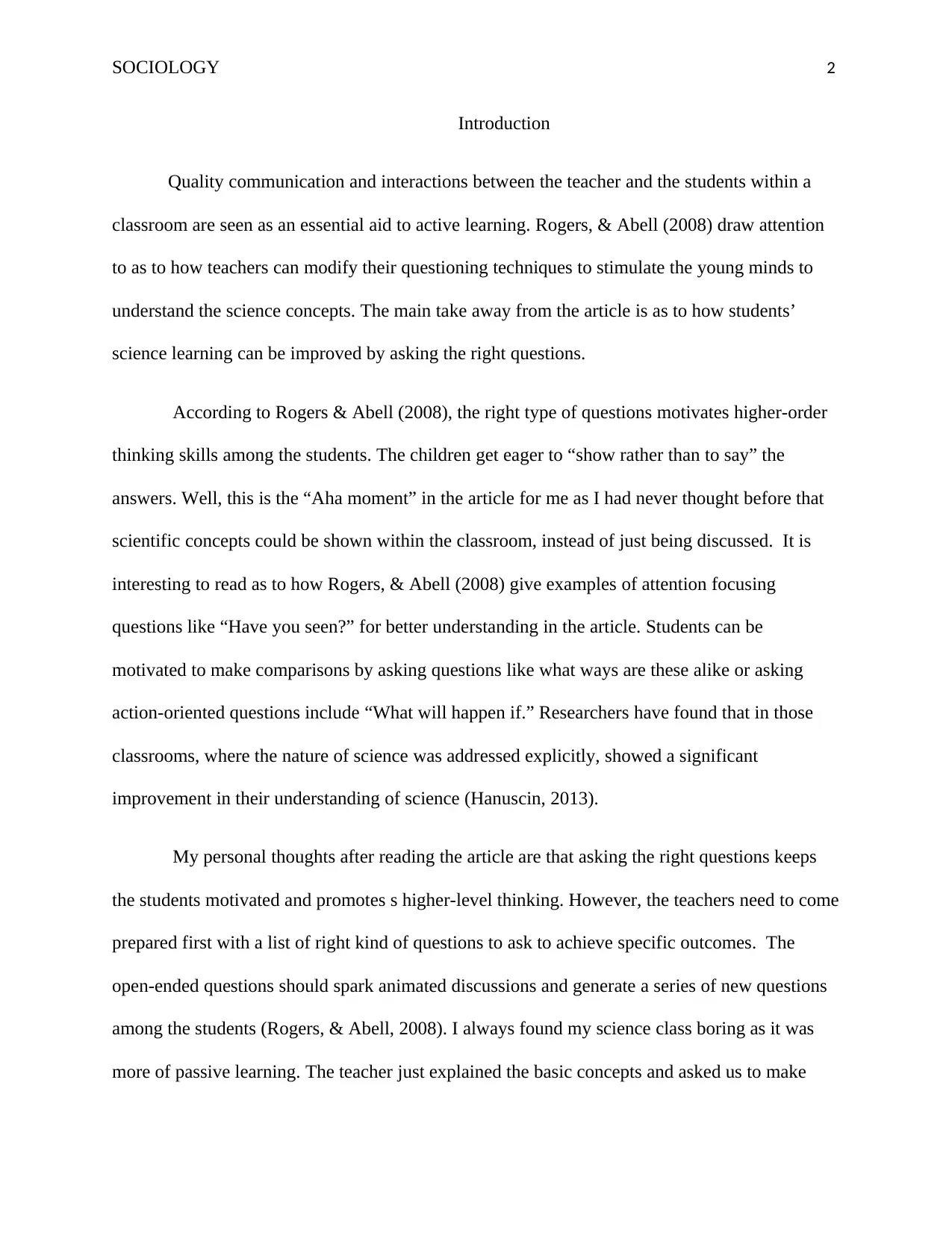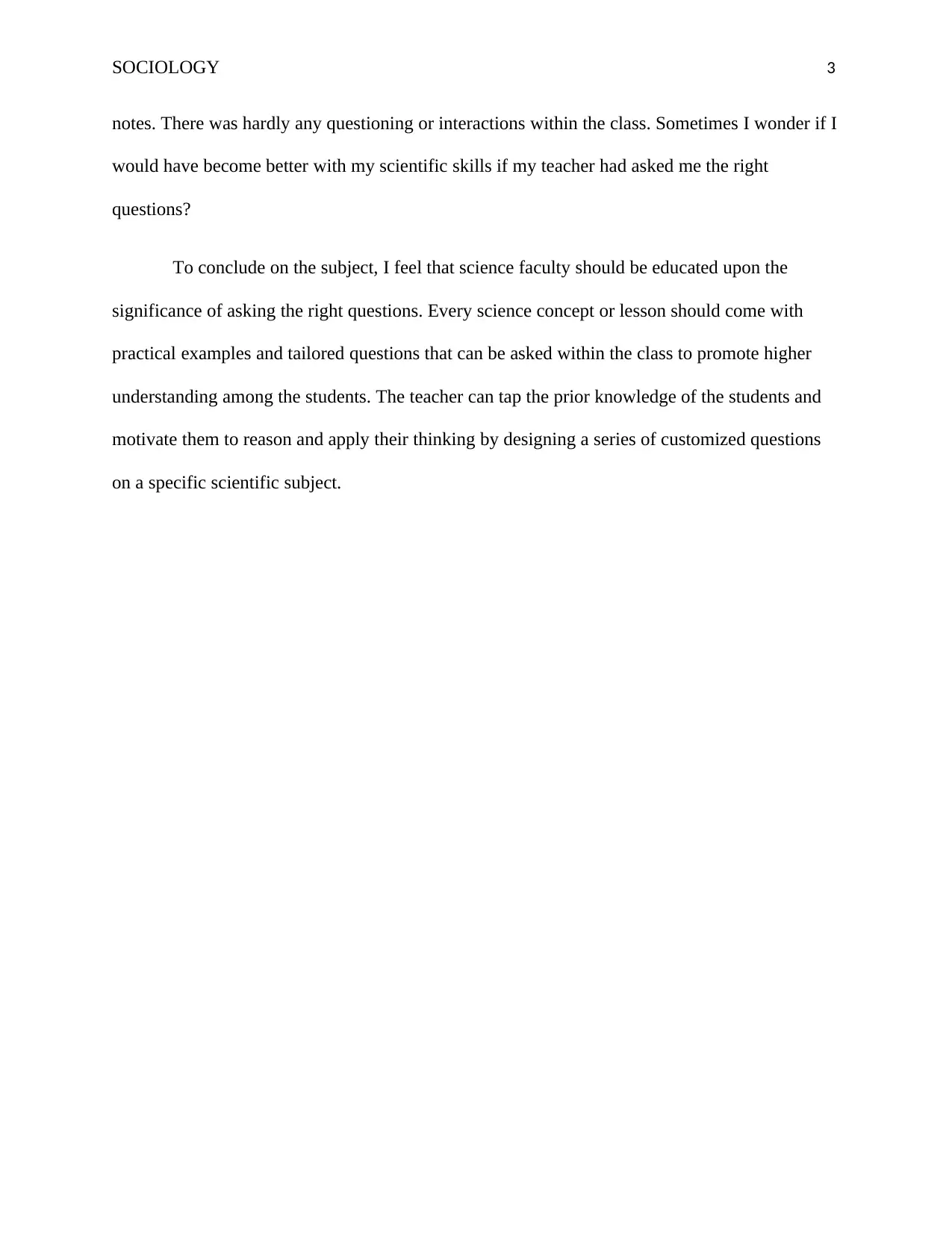Improving Science Learning Through Effective Questioning Strategies
VerifiedAdded on 2022/11/25
|4
|543
|195
Homework Assignment
AI Summary
This assignment analyzes the importance of effective questioning techniques in science education, drawing upon the article "The Art and Science of Asking Questions" by Rogers and Abell. The author reflects on how teachers can use strategic questioning to stimulate higher-order thinking and improve student understanding of scientific concepts. The assignment highlights the significance of open-ended questions, practical examples, and tailored questions to promote active learning and critical thinking in the classroom. The author contrasts their own passive learning experiences with the potential of interactive, question-driven science lessons, emphasizing the need for educators to be well-prepared with relevant questions to achieve specific learning outcomes and improve science learning.
1 out of 4











![[object Object]](/_next/static/media/star-bottom.7253800d.svg)